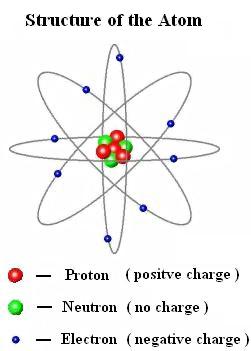ELECTRICAL CHARGES
Electricity begins with the atom, this is the smallest particle in matter.
Atoms are made up of protons and neutrons inside a nucleus and electrons moving around .


Sometimes, electrons move from one object to another and this makes the object electrically charged.
Now is your turn!
Try this experiment: pick up a pen and rub it against your shirt. What happens?
Both objects were electrically neutral and after the experiment the pen is positively charged and your shirt is negatively charged.
FORCES BETWEEN ELECTRICAL CHARGES
Depending on their charges, electrically charged objects attract or repel each other.
Let´s check this out with an experiment!
Pick up a balloon and rub it against your hair. What happens? Do they attract? Do they repel?
CURRENT ELECTRICITY
The movements of electrons from one object to another creates eletrical current. This electrical current can be transported and produced in a closed electrical circuit.

Is important to know that Electricity can be made from renewable or non- renewable energy sources.
You have studied these in previous units.
RENEWABLE ENERGY SOURCES
Solar energy
Water energy
Biomass
Wind energy
Geothermal energy
NON- RENEWABLE SOURCES OF ENERGY
Fossil fuels
Uranium
Two students from 6th grade, Nadia and Karina, made a summary about Wind energy.
Wind power
What is it used for?: To produce electricity
with wind energy.
|
Type of renewable
energy: Wind Power.
How many people around the world use it every day?: Spain is the fifth country in which more wind energy is used (approximately more than twenty thousand people).
Which country uses it
the most?: India.
How do we get it?: Wind energy is the energy from wind , ie the kinetic
energy generated by the effect of air currents , and is transmuted into other
useful forms of energy for human activities.
These are some links to funny games where you can practice what you have learnt. Enjoy!!
http://www.childrensuniversity.manchester.ac.uk/interactives/science/energy/renewable/
http://www.bgfl.org/bgfl/custom/resources_ftp/client_ftp/ks3/science/elecricity_2/electricity.swf
http://www.bbc.co.uk/schools/scienceclips/ages/6_7/electricity_fs.shtml
http://www.bbc.co.uk/schools/scienceclips/ages/10_11/changing_circuits_fs.shtml
http://www.bbc.co.uk/schools/scienceclips/ages/8_9/circuits_conductors_fs.shtml












